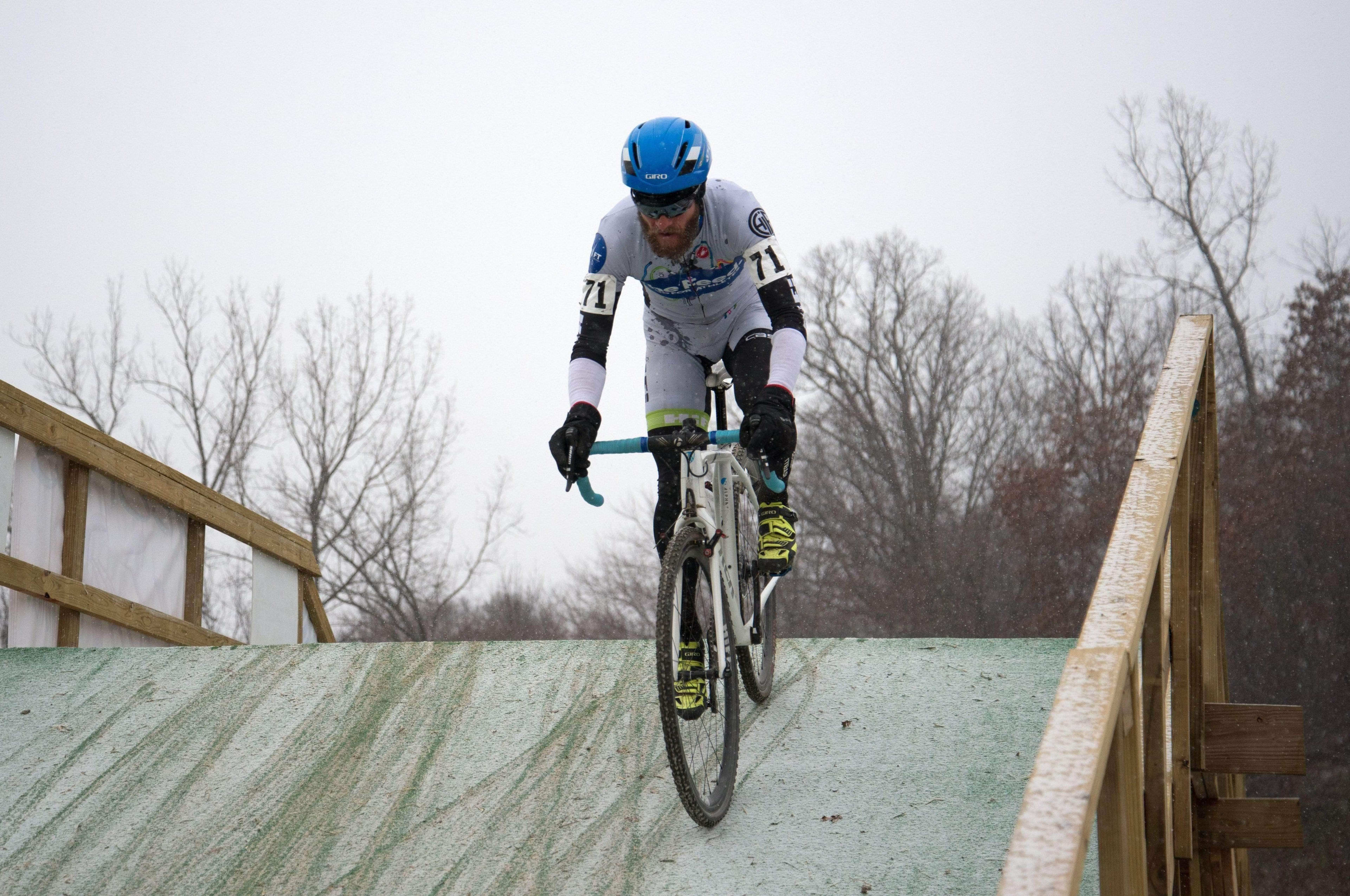
Cyclocross is quickly becoming the go-to sport for every type of cycling lover. These 30-60 minute intense races combine cycling, running up stairs and through sand, and hurdling over barriers while carrying your bike. Think of it as an all-out time trial on a bike, except there are obstacles in your way.
We've spoken with Alec Donahue, who is not only an elite racer across all cycling disciplines (mountain, road and cross), but one of the head coaches at Cycle-Smart, and rider for JAM Fund, a New England-based team that helps raise money to help up and coming riders pursue racing. He told us about cyclocross and how to fuel success. Why is cyclocross a different beast than road racing? The race begins like other races end, with an all out sprint to the first turn, known as "The Hole Shot." Getting your position ahead of other racers is important because moving up and past riders can be difficult depending on the courses twists, turns and obstacles. Going from zero-to-sixty in the first 20 seconds can be a shock to your system. Think how you feel after a final sprint. And in cross, once its over, you still have the entire race to ride. You need to go into cross with the right mental attitude and the right fuel to get you through high intensities. Cyclocross races are intense. In most cases if you aren't properly fueled going into the race you can't play catchup during the race. What should you eat before the race to be ready on the start line? For early morning races, most of what you're working with is hydration and fuel from the night before. Sleeping is essentially a 7-9 hour fast, so in the morning it's very important to get your blood sugar up to slightly above a normal level and top off liquids. If you have time, I recommend oatmeal with some Justin's Nut Butter. If you can add an egg or some form of protein on the side, like avocado, or a shake with nut butter you'll be good to go. If you value sleep more than food, cook the oatmeal the night before and eat it in the morning. Try to keep the meal under 500 calories. And if you have digestive troubles, or get them on race day, keep the meal at 300-400 calories. From your experience are there any foods to avoid on race day? Everyone is different so you can see what your gut tolerates. On race day I advocate avoiding dairy as much as possible and limiting meat pre-race. For races later in the day, whole foods and grains are great ways to keep your blood sugar elevated. Munching on dairy free bars like Bonk Breakers can keep you lightly fueled, while you await your race. Oddly enough sports psychology also comes into play on race day, and unmanaged stress impacts how fast your stomach empties and what happens with your food. Calm nerves make a calm stomach. You don't race cross with a bottle on your bike. We've all been there, we're on the start line and we take that last sip of water before tossing the bottle and waving goodbye to hydration for the next hour. What are your hydration tips to avoid dehydration on race day? You shouldn't have huge hydration plans on race day. Pounding drink mix or water isn't good for digestion: it will leave you feeling bloated. You need to come into the race morning well hydrated. This means making sure you're drinking things like Skratch Daily Hydration Mix or a diluted electrolyte mix on days leading up to your race, and hydrating with drink mix during each training session. You want to come into race day hydrated so you can slowly drink a few bottles pre-race, and between hot laps. Training during cyclocross doesn't really require those long hours on the bike. As training gets shorter, what do you recommend athletes eat so they can stay lean, but also have energy to train hard? When you're training shifts from long to short and hard, cut out the carbs you don't need. Dinner can look like 4-8 ounces of lean protein and veggies. When you can't cook, make a shake that is high in protein, good fats and low in carbs. I'm not fat phobic, you need it to keep everything in balance. Fat can be good as long as you avoid hydrogenated or highly processed fats. Saturated animal fat isn't great, but it's fine in moderation. Questions about fueling for cyclocross? Ask Al, and stay tuned for answers.
